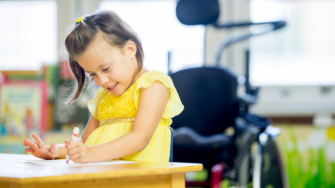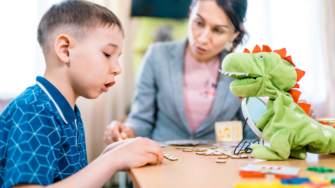If you or a loved one has been injured by a doctor or hospital, Call the Medical Malpractice Crisis Resource Line for Immediate Help >
Free Consultation. Call Now. (516) 394-4200
(516) 394-4200
Parenting a child with cerebral palsy can be challenging for couples. Here’s everything you need to know about cerebral palsy and how to take better care of your child.

Do you know cerebral palsy is the most commonly diagnosed child motor disability in US children? Statistics from the Autism and Developmental Disabilities Monitoring Network show that one out of every 323 children is likely to be diagnosed with cerebral palsy.
Parenting a child with cerebral palsy can be challenging for couples. If your child is diagnosed with cerebral palsy, it is essential for you to know all about the disease. So, you can take better care of your child with cerebral palsy. Read on, and we will explain cerebral palsy, its symptoms and causes, and how you can take better care of your cerebral palsy child to improve his health and life.
Cerebral is related to the part of a brain, and palsy means weakness of the muscles. As the name suggests, it affects the motor disability of a person by damage caused to the developing brain. It occurs before or during the child’s birth after 3-5 years of birth.
Cerebral palsy affects the posture and balance and motor skills of a diseased child. It may also create problems in vision, hearing and other activities controlled by smooth muscles, e.g., urine control, eating, breathing, bowel control, etc.
Every disease has some signs and symptoms, so does cerebral palsy. But its symptoms vary with age from child to child. Here are some cerebral palsy signs that will help you know if your child is also affected by cerebral palsy.
Normally, babies begin to sit on their own by 6 months and begin to crawl between six to twelve months of age. Your baby with cerebral palsy may show a delay in developmental learning like how to sit, crawl and walk.
Cerebral palsy affects the movements most as it damages the part of the brain that controls postures and movements.
If you are observing these signs and symptoms in your kid, you should take him to a doctor whether he is having cerebral palsy or not.

Cerebral palsy has been classified differently based on many factors, e.g., location and extent of the abnormalities. It is important to know the type, so your child can be cared for accordingly. Here, we will discuss the cerebral palsy types classified on the basis of movement disorder.
Approximately 5%-10% patients of cerebral palsy suffer from ataxic cerebral palsy. It is caused by damage to the cerebellum. Cerebellum maintains the balance of your body and is responsible for coordinating muscle movements.
If your kid has ataxic cerebral palsy, he may feel difficulty in walking and performing fine motor function such as writing and picking objects. It is characterised by problems associated with balance and depth perception.
It is caused by damage to basal ganglia and substantia nigra. The damage may be in the form of lesions due to low oxygen levels and accumulation of bilirubin. Dyskinetic cerebral palsy may affect the body movement of your child. He may experience involuntary movements in legs, hand and arms that make it difficult for him to sit and walk.
Your cerebral palsy baby may also feel difficulty in talking, swallowing food and sucking because it also affects the tongue and face of a patient.
It is the most common type of cerebral palsy. Almost 80% of cerebral palsy patients suffer from spastic cerebral palsy, as per centre of disease control and prevention. Spastic cerebral palsy is caused by the damage to the motor cortex, which is a portion of the cerebral cortex in the brain. It causes high muscle tone that results in imbalanced and jerky movements. The patient may experience difficulty in walking from one place to another.
It is further classified into different types based on which part of the body gets affected. Diparesis is the type which affects the legs or arms. Hemiparesis mostly affects one side of a patient’s body. Cerebral palsy quadriplegia affects almost all body, including limbs, face and trunk.
As the name indicates, it has symptoms of all the types discussed above.
As discussed before, cerebral palsy is caused due to brain damage that can occur during fetal life in pregnancy, during birth and even after the early days of birth. There can be many possible reasons that cause brain damage. Some of them are listed below:
Proper diagnosis of the disease is essential for the health of your child. It is usually diagnosed at the first or second year of your child’s birth. The doctor of your child may look for any symptoms related to delay in your child’s development and growth. He may also suggest you for different brain imaging tests, including EEG, CT scan, MRI, etc.
Unfortunately, It can’t be completely cured. But there are some medicines and procedures that can improve the quality of your kid’s life. The goal of therapy is to manage symptoms, prevent further complications associated with it, and improve patients’ life expectancy with cerebral palsy.
A doctor may refer your child to a physiotherapist for improving the movement and body posture of your child. It may immediately start after diagnosis of cerebral palsy.

Speech and language therapy is also recommended. It will improve the ability of speaking and communication skills of your child.
Children with cerebral palsy are usually more sensitive and emotionally weak. Recreation therapy improves self-esteem and emotional well being of an affected child. It can also enhance the cognitive skills of a person.
Your kid’s doctor prescribes medicines for managing symptoms. For example, he may suggest you take muscle relaxants for treating muscle tightening. A doctor will prescribe your child medicines according to the symptoms he has.
Surgery is for those patients who face difficulty in walking due to the stiffness of muscles. Your child may have to go through orthopaedic surgery or selective dorsal rhizotomy.
Well, it can’t be prevented completely because there are several reasons associated with it. However, when the mother is pregnant, she can’t be vaccinated to avoid any infection that causes damage to the fetal brain. It prevents cerebral palsy in babies. Cerebral palsy in adults can also be prevented if correct measures are taken, e.g., preventing head injuries.
Adults with cerebral palsy can be so indifferent and emotionally weak from other persons. The doctor may refer your kid to different specialists, so it is essential for you to be informed about your kid’s health condition. If you observe any toxic or adverse effect of medicine, consult your child’s doctor.

There are movement problems associated with cerebral palsy, so always make sure that the organization of different things is safe for your child. And focus on the diet of your child, so your child can fight the disease effectively.
Most of the children with cerebral palsy may have cognitive disabilities. You can always support your child in this case by promoting home learning. You can make your child practice to improve speaking and communication skills along with ongoing therapy.
If your child is going to school, he may experience abuse and bullying. So you should be aware of all the symptoms and indications of bullying. Playtime is extremely important for kid health, and it is even more crucial for a child with cerebral palsy. So, make sure you arrange a healthy environment for playing with your child.
Summary
Cerebral palsy is a non-progressive motor disease. It is caused by damage to the brain during fetal life or even after birth. There are many signs and symptoms associated with the disease that will let you know if your child is suffering from cerebral palsy. There are four types of it, and most commonly patients suffer from spastic cerebral palsy. Unfortunately, there is no cure for it, but the quality of life can be improved by managing symptoms of the disease. You can also take some steps to prevent any complications.
Medically Written By: Dr. Sheraz Khan
Dr. Sheraz is an expert medical writer passionate about educating the general public on their health issues. Doing his internship as a ‘house doctor’, Sheraz aims to specialize in internal medicine. His direct patient exposure gives him a better understanding of the real-life health concerns of a common man. With a keen interest in holistic health, he promotes healthy eating, exercise, meditation, and a conscious lifestyle to live a healthy life.
No. Our injury cases are handled on a contingent retainer. You pay nothing upfront, and we recover attorney’s fees only if your litigation is successful. We don’t bill by the hour. You don’t need to worry about running up a large attorney’s bill before you see any recovery for your injuries.
Yes. Our firm is dedicated to creating a strong relationship with our clients, beginning with keeping your information and consultation confidential.
Each case we encounter is carefully screened and evidence scrutinized to make sure the claim is meritorious and may be successful at trial. We will perform an investigation, and then our partners make a final decision on whether to take on a case.